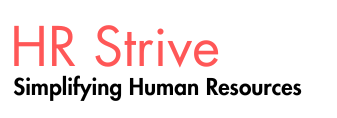In today’s fast-moving business landscape, improving organizational performance isn’t just about tweaking charts and workflows—it’s about realigning the heartbeat of the organization. That means rethinking how people work together, how decisions are made, and how culture supports strategy. When structure, roles, processes, and values are in sync with strategic goals, organizations don’t just grow—they thrive.
🤝 When HR Meets M&A: A Story of Strategy and Sensitivity
Imagine this: a company is pursuing an ambitious growth strategy through a merger and acquisition (M&A). The deal looks promising on paper—financials are solid, and the vertical integration could be a game-changer. But beneath the spreadsheets lies something more nuanced: people, culture, and values.
The CHRO steps in, armed with data from an HR task force. Yes, the numbers matter—workforce demographics, contract liabilities, and cost projections. But what really catches the CHRO’s eye is the cultural contrast. Their own organization champions innovation and autonomy. The target company? Deeply hierarchical, with rigid approval chains and formal communication paths.
This isn’t just a clash of styles—it’s a potential strategic risk. Using Behavioral Competencies like Business Acumen, Analytical Aptitude, and Global Mindset, the CHRO pieces together the puzzle. Then, with Consultation skills in full force, they present the findings to senior leadership—not just the risks, but the roadmap to navigate them.
🧩 Organizational Interventions: When Structure Needs a Rethink
Sometimes, the way an organization is built starts to work against its goals. Maybe the structure made sense during the startup phase, but now it’s slowing things down. Or maybe the market has shifted, and the organization needs to pivot—fast.
That’s where organizational interventions come in. These are strategic adjustments that help the structure support, rather than hinder, progress. Common triggers include:
📉 Inefficiency: The current setup no longer serves the strategy.
🔄 Strategic shift: New goals demand new skills, faster decisions, and more agility.
🏗️ Redesigning for Impact: What Organizational Design Really Means
Organizational design isn’t just about org charts. It’s about creating a system where everything—from mission to communication—works in harmony. Key elements include:
🎯 Mission, vision, and strategy alignment
🧠 Decision-making processes
📡 Communication flows
🔗 Work processes and structural linkages
🛠️ Systems that connect needs to resources—HR, financial assets, facilities, and institutional knowledge
When these elements are thoughtfully integrated, the organization becomes more than the sum of its parts. It becomes a living, breathing system capable of adapting and excelling.
👥 HR’s Strategic Role: From Diagnostician to Architect
HR isn’t just a support function—it’s a strategic partner in organizational design. Here’s how HR can lead the charge:
🕵️ Diagnose performance issues by uncovering structural root causes
🧭 Guide leaders through design options that fit the strategy
🎯 Align design decisions with both short- and long-term goals
🧑🏫 Clarify leadership roles in implementing new structures
📊 Monitor alignment and flag emerging challenges
🧑🔬 Source the right expertise—internally or externally—for development interventions
At its best, HR becomes the bridge between strategy and execution, between vision and reality.

No comments:
Post a Comment